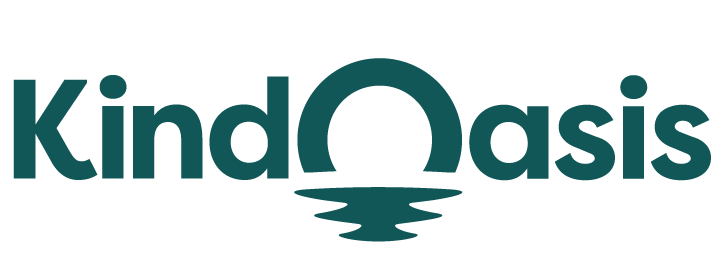Designing a User-Friendly Chatbot Interface with Tips for Shopify Store Owners
Try AI ChatbotOptimize your Shopify store with a user-friendly chatbot interface. Discover essential design tips for success!

Creating a user-friendly chatbot interface is essential for enhancing customer interactions and driving sales on your Shopify store. A well-designed chatbot can streamline communication, resolve customer inquiries quickly, and provide personalized experiences. One excellent example of a chatbot that effectively integrates these features is VanChat. This AI-powered pre-sales chatbot for Shopify can accurately answer 97% of customer questions without human intervention, making it a valuable asset for any e-commerce business.
To design an effective chatbot interface, it’s crucial to prioritize usability and clarity. Users should be able to navigate the chatbot seamlessly and understand its functionality right away. This approach not only improves customer satisfaction but also enhances the likelihood of conversions. For insights into effective chatbot design strategies, consider reading more about best practices for chatbot UI.
Understanding Your Audience
Identify User Needs
Understanding your target audience is fundamental when designing a chatbot. This includes recognizing common queries and issues that customers face. By analyzing frequently asked questions and feedback, you can tailor your chatbot to address specific needs. This strategy is essential for enhancing user experience and ensuring that the chatbot serves its purpose effectively.
VanChat excels in this area by continuously learning from your store’s content, images, and videos. This ensures it provides precise and timely responses to customer inquiries about product comparisons, order tracking, sizing, and returns. You can learn more about how chatbots can help improve customer service in this article. By accurately addressing customer needs, you can foster trust and encourage purchases.
Create a Clear Conversational Flow
A user-friendly chatbot should have a clear and logical conversational flow. This includes designing intuitive pathways that guide users to their desired outcomes without confusion. Start by outlining the main objectives of your chatbot interactions and create a flowchart to visualize the conversation paths.
Incorporating personalized interactions, like those offered by VanChat, can enhance the overall experience. VanChat asks follow-up questions to better understand user requirements, creating a more engaging and effective conversation. You can check out six ways chatbots boost conversion to see how these features can lead to increased sales. By analyzing behavior, purchase history, and chat logs, it builds detailed profiles that facilitate accurate interactions.
Design Elements That Enhance Usability
Keep the Interface Simple
Simplicity is key when designing a chatbot interface. Use clear language, straightforward prompts, and an uncluttered layout. Users should immediately grasp what actions they can take. Overly complicated interfaces can lead to frustration and abandoned conversations.
VanChat's design emphasizes simplicity and effectiveness. Its proactive sales features, such as sending timely discount reminders and suggesting best-selling products through pop-ups, encourage user engagement without overwhelming them. You can explore more about effective chatbot designs that help maintain a simple user experience. This simplicity ensures that users can easily navigate the chatbot and make informed purchasing decisions.
Incorporate Visual Elements
Adding visual elements, such as icons or images, can improve the user experience by making interactions more engaging. Use visuals to represent different options or categories, allowing users to navigate easily.
A well-designed chatbot, like VanChat, uses visual aids effectively to enhance communication. By integrating real-time updates and visual prompts, it keeps customers informed and engaged throughout their shopping journey. To delve deeper into the benefits of visuals in chatbot interfaces, consider reading how to create a successful Shopify video. This approach can make the chatbot experience more dynamic and user-friendly.
Test and Optimize
Once you’ve designed your chatbot interface, it’s vital to test it thoroughly. Conduct user testing sessions to gather feedback on usability and functionality. This insight can help you identify areas for improvement and ensure that your chatbot meets user expectations.
VanChat's continuous learning capabilities enable it to optimize responses based on user interactions. This iterative process ensures that the chatbot evolves over time, adapting to changes in user behavior and preferences. For further insights into the metrics you should track for your Shopify chatbot, check out this ultimate guide for Shopify chatbot KPIs.
Conclusion
Designing a user-friendly chatbot interface is essential for Shopify store owners looking to enhance customer engagement and drive sales. By understanding your audience, creating a clear conversational flow, and incorporating simple yet effective design elements, you can develop a chatbot that meets user needs and encourages conversions. Implementing solutions like VanChat can further enhance your chatbot's effectiveness, providing personalized experiences that drive customer satisfaction and loyalty.
Relevant Links
- VanChat on Shopify
- What Is a Shopify Partner?
- The Best AI Chatbot for Shopify
- Character Chatbot Uses and Benefits in Online Communication
- AI Chatbots in E-Commerce
- Introducing the Best Shopify Chatbot Powered by Conversational AI
- Shopify UX Best Practices
- 6 Ways Chatbots Boost Conversion
- 9 Examples of Great Chatbot UI Best Practices
- 5 Benefits of Using AI Bots for Customer Service






